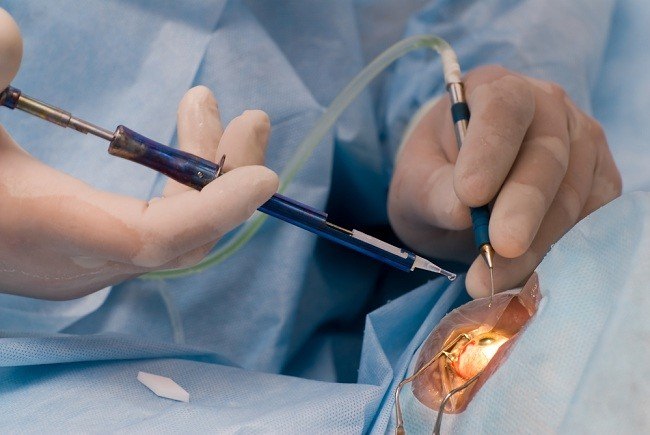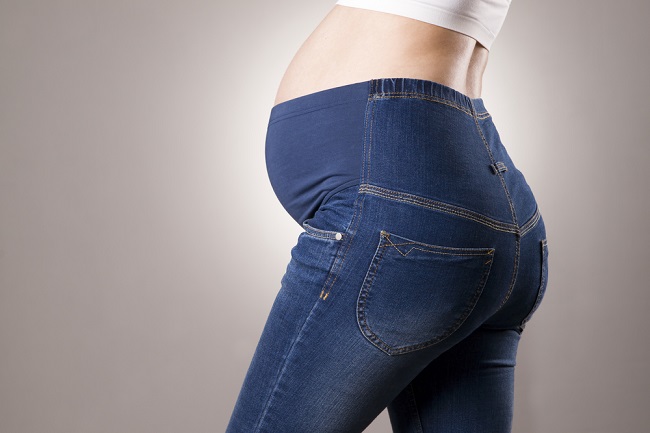Kernicterus is brain damage in infants caused by high levels of bilirubin in the blood. This condition occurs when jaundice is not treated immediately so that bilirubin levels continue to increase and cause damage to the brain.
Kernicterus generally afflicts infants because jaundice is common in infants. This is because the baby's liver in processing bilirubin is still slow. Meanwhile, kernicterus in adults usually only occurs due to genetic disorders that have an impact on the process of processing bilirubin.

Although it is a rare condition, kernicterus is very dangerous and can result in brain injury or cerebral palsy (cerebral palsy). In addition, kernicterus can also cause problems with teeth, vision and hearing problems, and mental retardation.
Causes of Kernicterus
Kernicterus is caused by high levels of bilirubin in the blood (hyperbilirubinemia) which is characterized by yellowing of the body. This condition, known as jaundice, is estimated to affect 60% of babies.
Bilirubin is a naturally occurring waste product when the body recycles red blood cells. Bilirubin levels that exceed normal values are common in newborns. This is because the baby's body still needs to adapt to get rid of bilirubin.
Increased levels of bilirubin in infants can occur on the third day after birth and can continue to increase until day 5. After that, the bilirubin level will decrease gradually until the yellow in the baby's body disappears by itself within 2-3 weeks.
However, some jaundice caused by certain conditions can develop into kernicterus, because in this condition bilirubin levels continue to rise. This condition is very dangerous because bilirubin can spread to the brain and cause permanent brain damage.
Some of the causes of jaundice that can progress to kernicterus are:
- Red blood cell disorders, such as thalassemia
- Rhesus incompatibility (rhesus blood of the baby and mother is not the same)
- Bleeding under the scalp (cephalohematoma) which is formed when the baby is born
- High levels of red blood cells are common in twins or babies with low birth weight
- Lack of enzymes that cause red blood cells to break more easily
- Medical conditions that affect the liver or bile ducts, such as hepatitis and cystic fibrosis
- Lack of oxygen (hypoxia)
- Infections that occur in the womb or at birth, such as syphilis or rubella
Kernicterus risk factors
There are several factors that can increase the risk of kernicterus in babies, namely:
- Premature birth
The liver in babies who are less than 37 weeks in the womb are not fully developed and are slower to remove bilirubin.
- Blood type O or rhesus negativeBabies born to mothers with blood type O or rhesus negative are more at risk of having high bilirubin levels.
- Family history of jaundiceThe risk of developing kernicterus in infants will be higher if the family has a history of inherited jaundice. An example of inherited jaundice is glucose-6-phosphate dehydrogenase deficiency.
- Lack of food intakeBilirubin is excreted with feces. Therefore, a lack of food intake can make the elimination of feces slow so that bilirubin levels in the body increase.
Symptoms of Kernicterus
The main symptom of kernicterus is jaundice, which is yellowing of the skin and sclera (white part of the eye). Jaundice generally appears 3 days after the baby is born and will disappear after 2-3 weeks.
However, if it lasts longer and is not treated, jaundice can progress to kernicterus which is characterized by the following complaints:
- Fever
- Easily sleepy
- Weak
- Throw up
- Abnormal eye movements
- Stiff all over the body
- Muscles tighten or weaken
- Don't want to breastfeed
- A shrill voice when crying
- Unusual gestures
- Hearing disorders
- Seizures
When to go to the doctor
As mentioned above, jaundice is common in babies and will go away on its own. However, an examination to the doctor should be done immediately if:
- Jaundice has not improved after more than 5 days
- Jaundice accompanied by fever, lethargy, or other symptoms above
- Baby's skin looks very yellow (light yellow)
If the baby is not delivered at the doctor or in the hospital, take the baby to the doctor for a thorough examination. The doctor will check for signs of jaundice within 3 days of birth.
Diagnosis of Kernicterus
The diagnosis of kernicterus is made based on the complaints that occur in the baby. In addition to observing the baby's skin and sclera, the doctor will check blood bilirubin levels. In infants with kernicterus, bilirubin levels may be more than 25–30 mg/dL.
In addition, the doctor will also perform a follow-up examination to determine the condition that causes jaundice in the baby. Examinations that can be done are blood tests to detect blood disorders or infections and check liver function.
Kernicterus Treatment
Treatment of kernicterus aims to reduce bilirubin levels in the blood and prevent brain damage to the baby.
In mothers of babies with kernicterus, one simple way that can be done is to provide adequate intake of breast milk or formula milk. Adequate breastfeeding or formula milk can maintain body fluid levels and help remove bilirubin through urine and feces.
Meanwhile, medical actions that can be taken by doctors are:
Phototherapy
Phototherapy or blue lighttherapy aims to lower the level of bilirubin in the blood using a special light. Phototherapy can be done by two methods, namely conventional methods and fiberoptic methods.
Conventional phototherapy is done by placing the baby under a halogen lamp or fluorescent lamp. After all the baby's clothes are removed and the baby's eyes are closed, the baby's skin will be irradiated with a blue light. Meanwhile, in fiberoptic phototherapy, the baby will be laid on a mat equipped with a fiberoptic cable to be irradiated on the back.
Phototherapy is generally carried out continuously with a 30 minute break every 3 or 4 hours. The pause is intended so that the mother can feed and change the baby's diaper.
If the baby has not improved after undergoing this therapy, the doctor will suggest a combination of phototherapy using more than one beam and the use of fiberoptic mats. This combination therapy is done continuously. Therefore, food and fluid intake will be given through an IV.
During phototherapy, bilirubin levels will be checked every 4-6 hours. If the level decreases, the examination will be reduced to every 12 hours. Generally, it takes 2-3 days for the bilirubin level to drop and reach a safe level.
Exchange transfusion
If the bilirubin level in the baby is still high even after undergoing phototherapy, the doctor will recommend an exchange transfusion. This procedure is done by replacing the baby's blood with donor blood.
Exchange transfusions can take up to several hours. After undergoing a transfusion, the baby's bilirubin level will be checked every 2 hours. If the bilirubin level is still high, the exchange transfusion will be repeated.
Keep in mind that brain damage from kernicterus is irreversible. However, medication can prevent more severe brain damage. This is why newborn babies should be closely monitored. Apart from being a prevention, bilirubin levels that rise quickly can be treated earlier.
Complications of Kernicterus
A number of complications that can arise in infants with kernicterus are:
- Athetoid cerebral palsy, namely movement disorders due to brain damage
- Impaired eye movement, for example, the eyes can't look up
- Stains on baby teeth
- Hearing loss to deafness
- Mental retardation
- Difficult to talk
- Muscle weakness
- Disturbance in controlling movement
Kernicterus Prevention
In the hospital, newborns will generally be observed every 8–12 hours for the first 2 days from birth. Re-observations will also be made before the baby is 5 days old.
If the baby looks yellow on observation, the doctor will do a blood bilirubin examination. Normally, bilirubin levels in newborns are below 5 mg/dL. In addition, the doctor will also evaluate the risk factors for jaundice and kernicterus in the baby to decide whether the baby needs special care.
For new mothers, it is important to take the control baby to the doctor within 2-3 days after being discharged from the hospital. This is so that medical examination and treatment can be carried out immediately if jaundice in infants does not improve.









